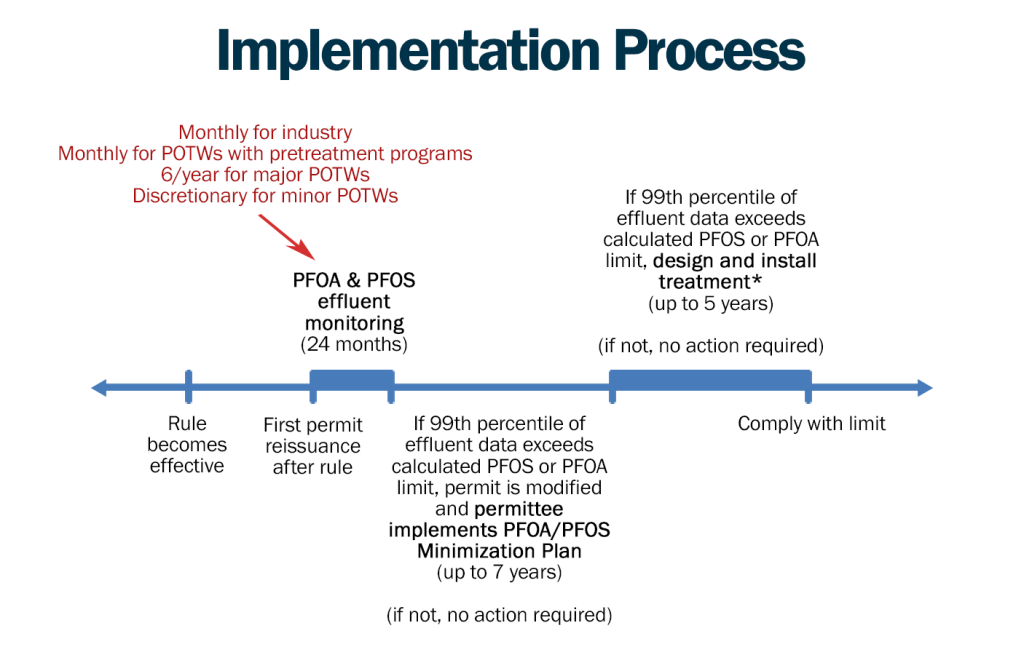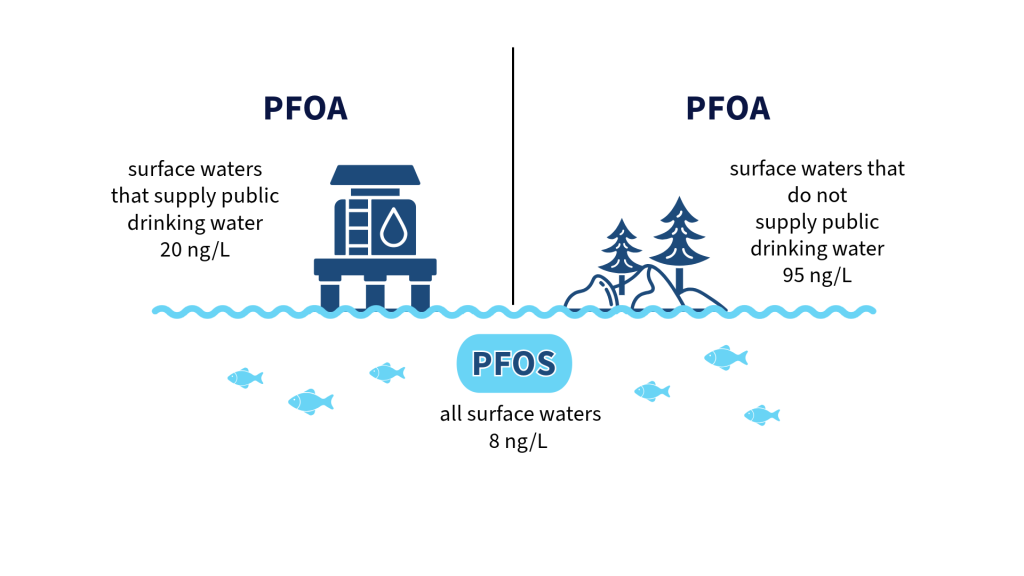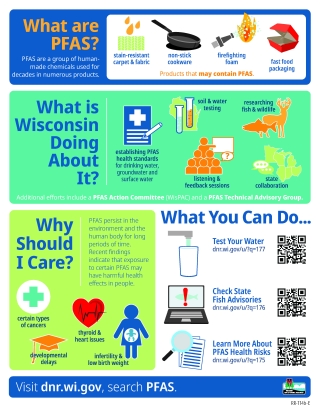Water Quality PFAS Initiatives
The DNR is conducting a number of initiatives related to per- and polyfluoroalkyl substances (PFAS) contamination and water quality in Wisconsin. These initiatives are:
- PFAS surface water rule and implementation;
- surface water and fish tissue sampling; and
- PFAS and biosolids.
More information about each of these initiatives is available on this page, and additional information and data will be posted as it becomes available.
1. PFAS surface water rule and implementation
Rule Background
In the winter of 2020, the Natural Resources Board (NRB) approved a Scope Statement for the department to begin work on developing surface water quality criteria for the poly- and perfluoroalkyl substances (PFAS) perfluorooctane sulfonate (PFOS) and perfluorooctanoic acid (PFOA). The scope statement approved the update to several of Wisconsin’s Administrative Code provisions as part of the PFOS and PFOA surface water quality criteria rulemaking including, ch. NR 102, ch. NR 105, ch. NR 106 and ch. NR 219. The rulemaking effort involved extensive engagement with permittees and their member organizations, the public and environmental groups prior to the standard practice of public notice and hearings associated with the draft Economic Impact Analysis and draft rule language.
The proposed rule package was approved by the NRB on Feb. 23, 2022, with subsequent passage by the governor and legislature. The rule was then signed by the secretary with an effective date of Aug. 1, 2022.
PFOS & PFOA Surface Water Quality Criteria
View the technical support document for information about PFAS surface water criteria derivation.
The final rule includes surface water quality criteria for both PFOS and PFOA. For PFOS, due to the bioaccumulative nature of the compound and the critical exposure pathway being fish consumption, the water quality criteria is established at 8 nanograms per liter (ng/L) in all waters without consideration of dilution provided from a mixing zone. For PFOA, given the compound is not considered to be bioaccumulative, dilution can be considered from a mixing zone if the waterbody has assimilative capacity and is eligible for mixing zone consideration. The PFOA standard, which is based on drinking water protection, is tiered as follows: 20 ng/L in waters that are public drinking water sources and 95 ng/L in all other waters to ensure protection against the incidental ingestion of water by children during recreation.
Permit Implementation of PFOS & PFOA Criteria
Beginning with Wisconsin Pollutant Discharge Elimination System (WPDES) surface water permits slated for issuance on Oct. 1, 2022 and thereafter, PFOS and PFOA monitoring will be included in select WPDES permits based on language included in the rule. PFOS and PFOA monitoring will be required in the first two years in those WPDES permits. The department will promptly review the monitoring data at the close of the monitoring period and determine whether the 99th percentile of the data demonstrates that the effluent has the reasonable potential to exceed the applicable PFOS and/or PFOA criteria. If the data demonstrates reasonable potential to cause or contribute to an excursion of the criteria, the permit will be modified to include the development and implementation of a PFOA/PFOS Minimization Plan, which can be included for up to seven years as part of the WPDES permit.
The DNR has developed minimization plan guidance as a resource to assist permittees in source reduction efforts. To accompany this guidance document, the DNR created an Excel spreadsheet [XLSX] with data from 73 publicly owned treatment works (POTWs) and an R code file to aid in fingerprinting of potential sources to their sewerage systems for the purposes of source identification.
At the closure of the PFOA/PFOS Minimization Plan component of the WPDES permit, if the discharge still has reasonable potential to exceed the water quality standards for either or both parameters, the permittee will need to design and install treatment to address the remaining concentrations above the applicable PFOS and PFOA criteria. The visual below provides a conceptual picture of the process described in this section.

2. Surface water and fish tissue sampling
Information about the statewide monitoring project to sample fish tissue and water chemistry at select sites is now available at the Surface Water and Fish Tissue Sampling webpage.
3. PFAS and Biosolids
The rule addresses surface water quality criteria for PFOS and PFOA. While the department awaits the finalization of EPA’s risk assessment for PFOS and PFOA in municipal sludge (biosolids), it has developed an Interim Strategy for permittees to use when considering the disposal of PFOS and/or PFOA-impacted municipal sludge.
Contacts
For questions relating to these initiatives, contact:
- Amy Garbe, P.E., Compliance & Sampling Techniques – Amy.Garbe@wisconsin.gov
- Nicole Krueger, Effluent Limits - Nicole.Krueger@wisconsin.gov
- Nate Willis, P.E., Wastewater Treatment System Plan Review, Permitting & Pollutant Minimization Program – Nathaniel.Willis@wisconsin.gov
- Fred Hegeman, P.E., Residuals – Frederick.Hegeman@wisconsin.gov


